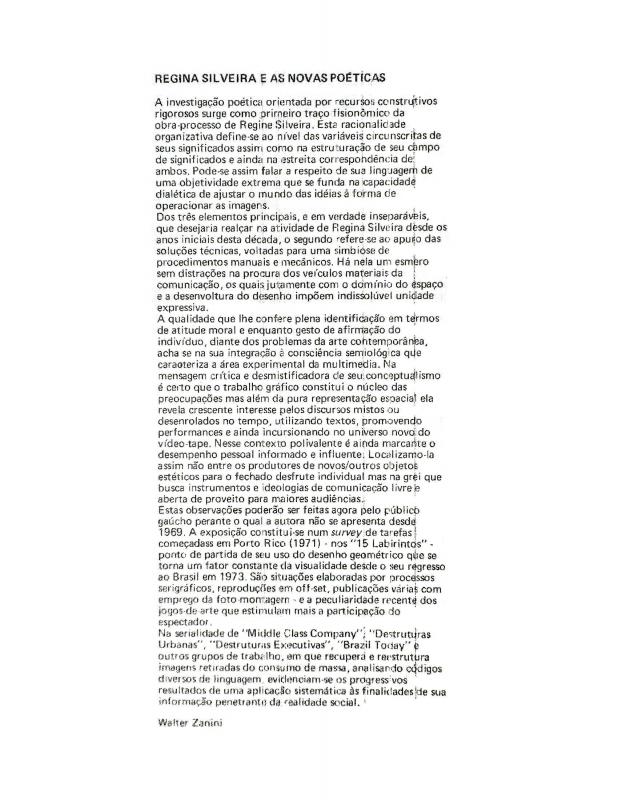Regina Silveira (b. 1939) began her art life as a painter, printmaker, and draftsman in the 1960s in Porto Alegre, the capital of Rio Grande do Sul. A European trip stirred her interest in the multiple possibilities of spaces taken up by geometric forms. Working as an art teacher in Puerto Rico (1969), the artist found her work splitting into two elements: (1) pursuing aspects of artisanal development and (2) following her interest in the techniques of modern reproduction. The Isla del Encanto [Island of Enchantment] also favored her immersion in the phenomenon of what was called the “dematerialization” of the object. Back in Brazil in 1973, she settled permanently in São Paulo. In the 1970s, she executed notable series such as Destruturas Urbanas [Urban Destructures], Executivas [Executives], and Brazil Today, in which she arranged books, albums, and other objects in combinations that reflect on environmental issues, bureaucracy, and power.
The series Simulacros is undoubtedly a reworking of the earlier idea of dematerialization (which had arisen in Argentina starting in the mid-1970s). There is a text by Professor Walter Zanini, entitled “Regina Silveira e as novas poéticas” [doc. no. 1110655], in which he discusses these “art games” that called for participation by the viewer. At the same time, the artist was analyzing different codes in the visual language, recovering and restructuring images lifted from mass consumption, or in this case, art history itself. It is worth adding that the title of this series was informed by the impact of the French theoretician Jean Baudrillard on art theory. In 1981, Baudrillard published his philosophical treaty Simulacra and Simulation, in which he addresses the links between reality and symbols in the Postmodern society.
The installation In Absentia (M.D.) was presented for public viewing in 1983, during the Seventeenth São Paulo International Biennial. The “absent objects” referred to by the artist were two well-known works by (M)arcel (D)uchamp, Bicycle Wheel (1913) and Bottle Rack (1914). Using this approach, Silveira set forth her series Simulacros, appropriating images that were “absent” from art history; her purpose was to build a transitional bridge between the Conceptual approaches of the 1970s and the appropriative approach (crammed with references) inherent in the referential culture that prevailed in the 1980s.

